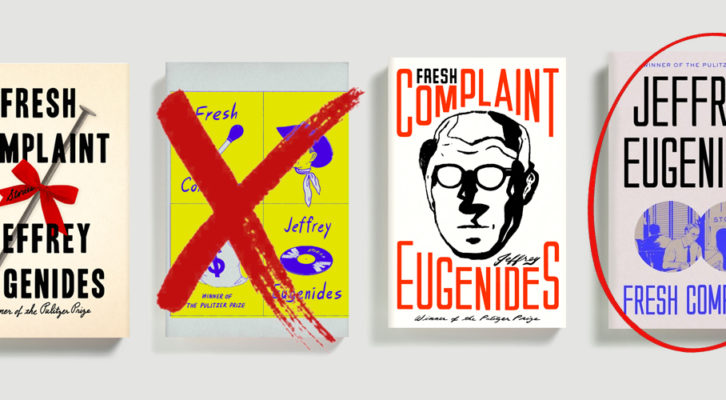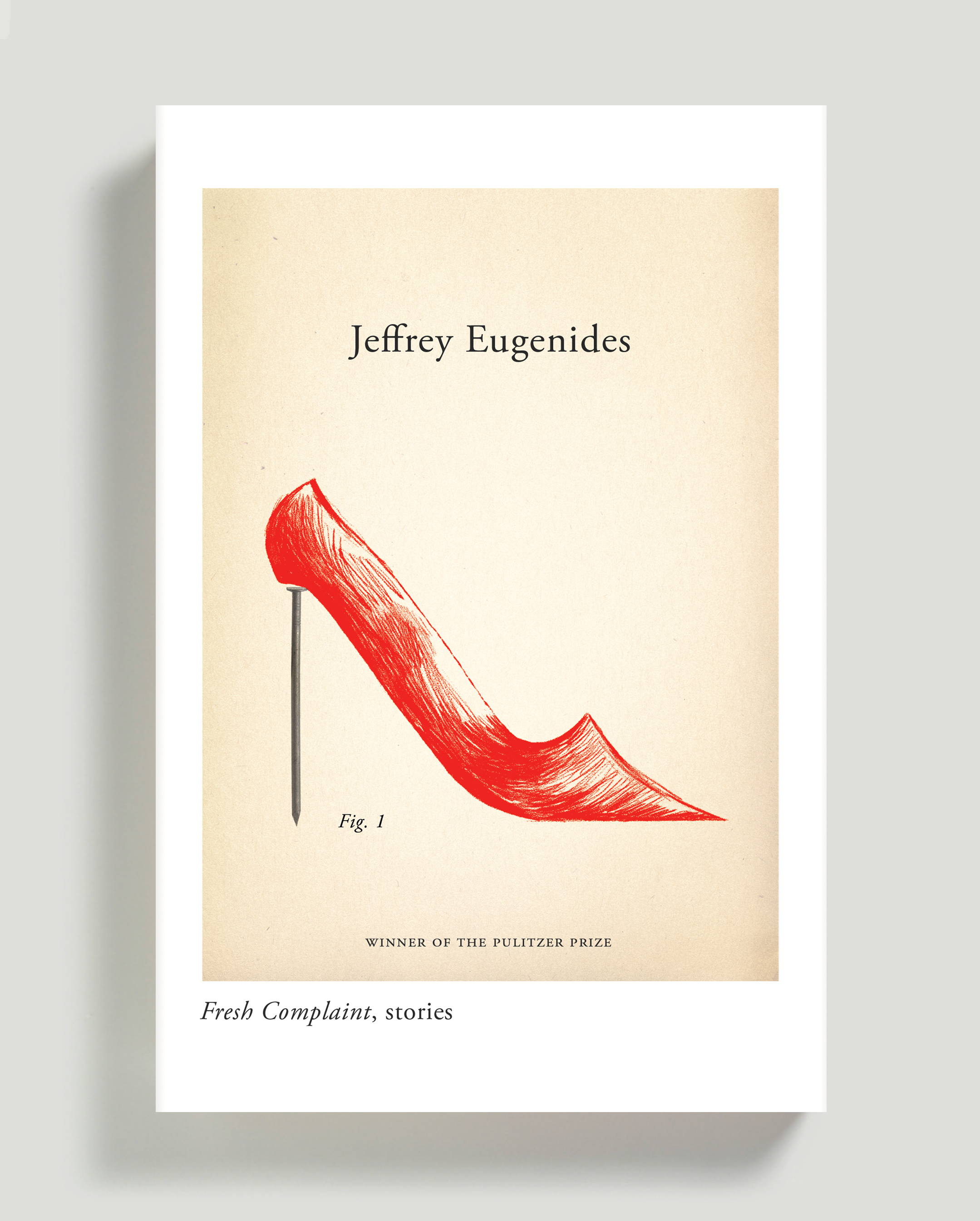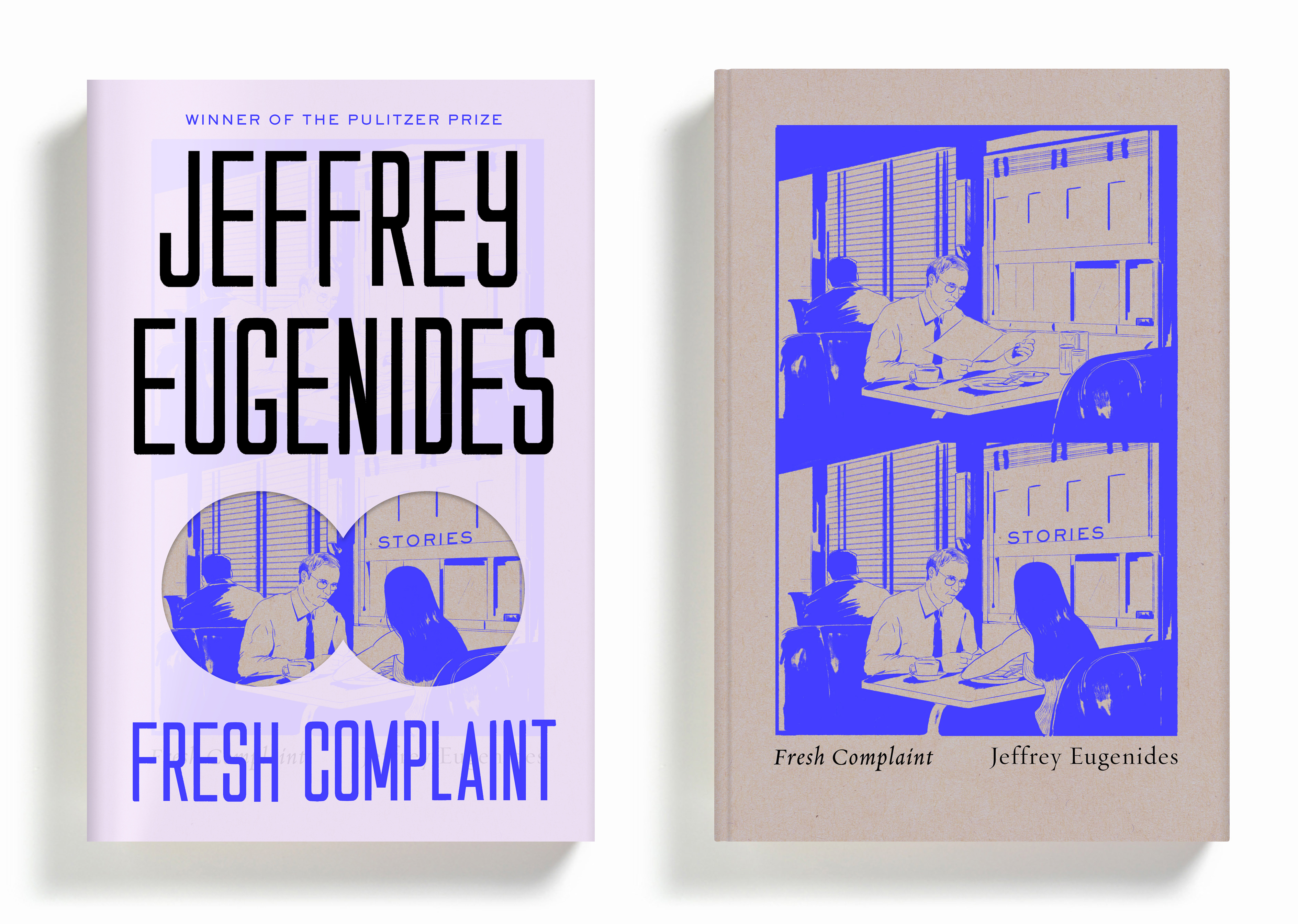
When Your Favorite Writer Does Not Like Your Initial Cover Designs
Na Kim on Designing a Cover for Jeffrey Eugenides's Fresh Complaint
“Though my problems are meaningless, that don’t make them go away.”
–Neil Young, On the Beach
Making personal work has always been a part of my practice. In fact, until a few years ago, my only job was being a bartender, and my personal illustration work was my single source of visual output. With a little luck and a lot of help, I stumbled into my career as a book cover designer. With so much to learn in design, I had to organize my time wisely. As a result, the time I spend on my personal work has diminished, but the occasional selfish urge will compel me to make something. It’s a way of practicing my skills and exercising my ego—a task I think is necessary in order to thrive as an artist.
My foray into book cover design has brought many perks, one of which is working for authors I’ve long admired. Lo and behold, I was recently assigned with a new collection of short stories by one of my favorite writers, Jeffrey Eugenides. Hell yes. Furthermore, he wanted an illustrated cover. Jackpot.
I read the manuscript overnight. I couldn’t believe how good it was. I poured all of myself into designing this cover for the following week and hit “send.” As I eagerly awaited approval, I enjoyed a rare moment of satisfaction.

The following morning, I was not met with the reaction I expected. The author, whom I planned on wowing with my ingenious designs, did not write me a personal email saying, “It is more beautiful than I could possibly have imagined. Whatever the book’s success is will rest in significant part with your work on it; I’m so grateful!” Instead, due to the mercy of my editor, much of the author’s response was redacted and summed down to, “I’m afraid I’m bearing bad news . . .” I did not pass go, and I certainly did not collect $200.
Let the spiraling commence.
What started weeks ago as a sure winner had turned into a hundred-page InDesign document. Embittered, I started bargaining with myself through cheap edits. Surely, italicizing the subtitle will do the trick. No? How about making it sans serif? Two more weeks dragged on, and I was no closer to an approved jacket. People started getting impatient, and the aforementioned mercy of my editor was nowhere to be found. Quiet threats of assigning a freelancer to finish the job began floating around. The anxiety trickled down and spread through me like a pox; manifesting itself at 3am as a recurring nightmare in one act:
Everything is black. My vision is obstructed by a behemoth Photoshop window. I infinitely scroll through layers, clicking on and off, unable to escape. Fuckkkkkkkk–
I woke up to an email from marketing, wondering why the cover never made it to the sales conference. More shame. I got to work and implored my boss for some guidance. We went through the usual round of “Did you try this?” and “Did you consider that?” I defensively hissed back, “Yes, yes of course I did, come on.” Then a pause. As I prepared to leave he finally asked, “Are you actually thinking about this book? Or are you just trying to make something cool?” Having been forced to confront my own narcissism, I sheepishly mouthed a near-silent “no,” and shuffled back to my desk in embarrassment. I’d been exposed. I had put my wants and ambitions as a designer ahead of what the book actually needed.
It’s happened before, and it’s liable to happen again. My instincts as a designer had unwittingly betrayed me. I wanted to make a beautiful book jacket, but had forgotten why. I reminded myself that a well-designed book jacket ultimately serves the book it’s made for. Like a neon sign, a three-letter word switched on in my head: J O B. This is a job. I closed all the tabs and windows on my screen. A fresh start would do me good.
At first, it felt counterintuitive to waste more time away from the cover, but I knew what I really needed was a palate-cleanser. So instead of returning to the cover at large, I decided to draw for the rest of the evening. In the following weeks, I stopped feeling sorry for myself. I remembered how lucky I was to be here. I re-read the stories and the author questionnaire that I’d been graciously provided with. I went through a few more rounds, this time, listening to the editor and author’s input. The end result was a far stretch from what I had originally envisioned, but the publisher, author, and I were all pleasantly surprised by the outcome.
My private practice has now become an invaluable tool in allowing me be emotionally cognizant of the needs of a book and its author. It’s also allowed me to appreciate the separation of my personal work from my job as a cover designer. Lately, with all of this in mind, I’ve been less inclined to project myself onto a cover. Instead, akin to therapy sessions, I carve out a few hours every week to draw and make whatever I like. Sometimes I do it just for fun or as a way of practicing a new technique. Other times, it leads to jobs where a personal narrative or point of view is required. But mostly it’s become the perfect outlet for my unwavering self-indulgence, and I relish every minute of it.

Na Kim
Na Kim is a senior graphic designer at Farrar, Straus and Giroux, an illustrator, and ceramicist.



















